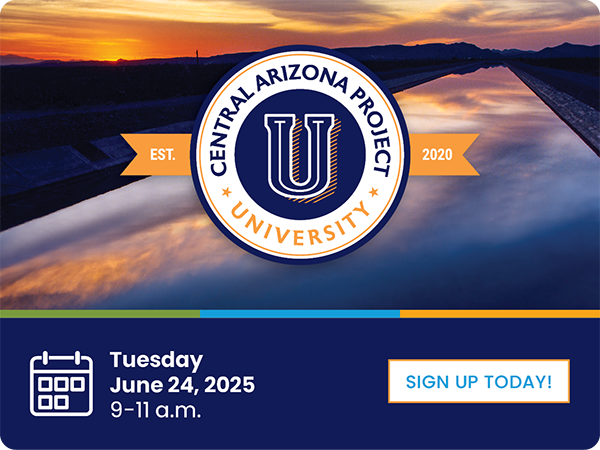Arizona’s water future – ‘Ag to Urban’ is a good start
Bruce Babbitt, Guest Commentary//September 26, 2025//
Arizona’s water future – ‘Ag to Urban’ is a good start
Bruce Babbitt, Guest Commentary//September 26, 2025//

As the drought extends its grip across Arizona, we are flooded with stories of the impending crisis — Phoenix, Scottsdale, Tucson and other cities are running short of water for future growth and development.
Arizona now faces a hydrologic zero-sum calculation. More water for home building and industry will mean less water use in other sectors. The other sector most affected will be agriculture, for one reason: agriculture uses fully 72% of Arizona’s annual water supply.
Arizona has at last begun to deal with this zero-sum reality. In July, the Legislature passed, and Governor Katie Hobbs signed, an unprecedented law to authorize the transfer of groundwater rights from agricultural to urban use within Maricopa, Pinal and Pima counties.
This framework legislation – called “Ag to Urban” – enables farmers in these three counties to sell and transfer their groundwater rights to the home building industry. The law, passed with broad support from the agricultural community, is entirely voluntary. Individual farmers can choose whether to sell, when to sell and at what price.
To gain the necessary majority for passage, Ag to Urban contains a significant limitation: the credits made available to home builders can be used only within a one-mile radius of the farmland being retired from production, thereby ensuring that local communities will retain a continuing share in ongoing regional development.
Ag to Urban is a good pioneering start. It will provide water to support urban growth without further depleting groundwater levels. However, it does not provide sustainable surface water so desperately needed to offset upcoming reductions in Colorado River supplies. To make up for those reductions, Arizona must expand Ag to Urban to include irrigated agriculture along the Colorado River.
Ag to Urban transfers along the Colorado River are not a new idea. Just look across the river to the Palo Verde Irrigation District in California. In 2005, Palo Verde entered into a 35-year lease to transfer up to 100,000 acre feet of water each year to the Metropolitan Water District of Southern California which supplies Los Angeles.
In the Palo Verde program, member farmers may volunteer to participate by fallowing a portion of their farmland. More than 90% participate in the program. Annual transfers are capped at 28% of total district acreage to assure the continued economic viability of the District.
This Palo Verde transfer model should be adapted for use in Arizona. The place to begin is In Yuma County where three large federal reclamation districts along the Colorado River use more than 850,000 acre feet each year to irrigate about 150,000 acres. Under outdated laws that govern priorities in times of drought, these Yuma County irrigators are largely exempt from the drastic cuts faced by urban water users served by the Central Arizona Project.
The time has arrived for the Arizona Legislature to establish a Palo Verde-style statutory framework authorizing voluntary fallowing of up to 20% of combined district acreages in Yuma County. A 20% cap would yield approximately 170,000 acre feet per year for transfer to urban users in Central Arizona.
A voluntary transfer program of this size need not impact the important winter vegetable economy in Yuma County. Winter vegetables use about half of the irrigation water in the county, the rest being primarily devoted to alfalfa and other varieties of hay. There’s plenty of space for a transfer program that will not affect the lettuce economy.
The Legislature should build off Ag to Urban’s promising start by adopting a comparable program for Yuma County farmers in the upcoming legislative session. The year 2026 is the time for a decision when the seven Colorado River states must reach an agreement on new rules for managing dwindling water supplies. Arizona should lead the way.
Bruce Babbitt is a former governor of Arizona, and former U.S. secretary of the interior under President Bill Clinton.














































